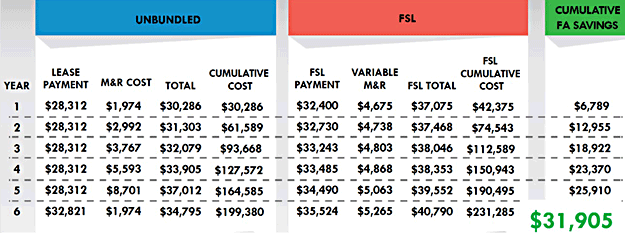
The Equipment Leasing & Finance Foundation recently released its August 2023 Monthly Confidence Index for the equipment finance industry (MCI-EFI). The index1 has traditionally shown a qualitative assessment of both the prevailing business conditions and expectations for the future. The latest report shows that confidence in the equipment finance market has an indicator of 50.4, an increase from the July index of 46.4.
Nearly 11 percent of survey respondents believe demand for leases and loans to fund capital expenditures (CAPEX) will increase over the next four months, an increase from 7.7 percent in July. As demand for financing begins to potentially increase in the coming months, so does the importance of equipment asset procurement strategies1.
These indicators reinforce the need for greater equipment financing flexibility, and this includes a heightened sense of asset procurement protocols, such as the right contract renewals approach to maximize equipment replacement cycles. In fact, reviewing contract renewals and equipment replacement cycles is difficult for many companies, as one study shows that 91 percent of companies do not have a dashboard that tracks renewal status. This awareness is so important that the business world dedicates an entire month in March to help acknowledge the importance of asset awareness.
This has served as a special reminder to businesses that no matter the time of year, it’s essential to understand how improved asset management and financial flexibility can contribute to an organization’s overall mission and revenue goals. Asset management is vital to any organization looking to grow its portfolio. No matter the kind of organization, the benefits of asset management are valuable:
- Improved budgeting and planning
- Increase efficiency
- Manage equipment and improve maintenance
- Provide compliance with regulations
Identifying Strategies to Inject More Financial Flexibility into Asset Management
Asset management is especially critical today because flexibility is at the forefront of every successful business strategy. Today’s finance executives realize they must scrutinize every detail of each truck’s lease structure within their portfolio since the financing model and lease structure can mean the difference of millions gained or lost toward their portfolio’s bottom line. To help executives maximize their asset management, asset management firms are providing a full suite of data analytics to determine the best finance option for their portfolio.
These tools are needed to help organizations make better decisions because finance costs are a significant calculation in any equipment acquisition. The most effective process to reduce truck costs and finance costs is to have competitive finance options. For example, competitive options can be achieved when full-service lease agreements are unbundled, allowing the freedom and flexibility to shop for the most competitive options. To determine if unbundling is a good fit for an operation, a UBL/FSL Comparative Cost Analysis should be utilized. In the example below, the calculation captures significant savings in a UBL compared to finance/monthly costs against an FSL ($31,900 per vehicle), even for daycab trucks running roughly 55,000 miles per year. The CPI increases are based on actual history (4.0 percent Cap). These amounts will differ by cab type, application, utilization, and OEM, but savings versus a traditional FSL will likely be achieved.

In addition to a lease type analysis, various metrics should be deployed, such as the lease versus purchase analysis, lease versus loan analysis, sales tax analysis, etc.
It’s important for finance executives of these organizations to realize that every truck has a different in-service start date and keeping track of all units is cumbersome but imperative. Therefore, in addition to monitoring Total Cost of Ownership (TCO) expenses, organizations must constantly analyze their portfolio’s complete truck life cycle data to determine when trucks are nearing the right time for a replacement starting at 18 to 20 months before contract expiration.
It is also important not to get locked into a financial structure that does not match the usage of the asset, limiting flexibility to get out when the market changes or when it’s time to pivot.
When reviewing contracts and various in-service dates, important checklist items include:
- monitoring lease expirations by truck;
- checking if there is flexibility to exit the lease in 90 days;
- determining what type of extension provisions are in place;
- checking if the fleet is locked in a contract with limited options; and
- evaluating if the fleet can produce a true Cost Per Mile (CPM).
Regardless of what type of lease or financing is being utilized, organizations must determine what is included and conduct a line-by-line comparison for each cost item such as the lease payment, warranty, maintenance and repair cost (whether in-house or outsourced), licensing, tires and etc.
With all the economic changes still occurring, companies must utilize every possible resource to properly manage their asset portfolios to create as much financial flexibility as possible. Today’s organizations continue to seek advanced data-driven tools that can help offer insight into their decision making, which is why it’s critical to work with a holistic asset management partner that can help maximize efficiency and reduce cost at every opportunity.
With this approach in mind, businesses will realize how more robust asset management practices will contribute to their organization's overall mission and revenue goals.
1: https://www.leasefoundation.org/industry-resources/monthly-confidence-index/